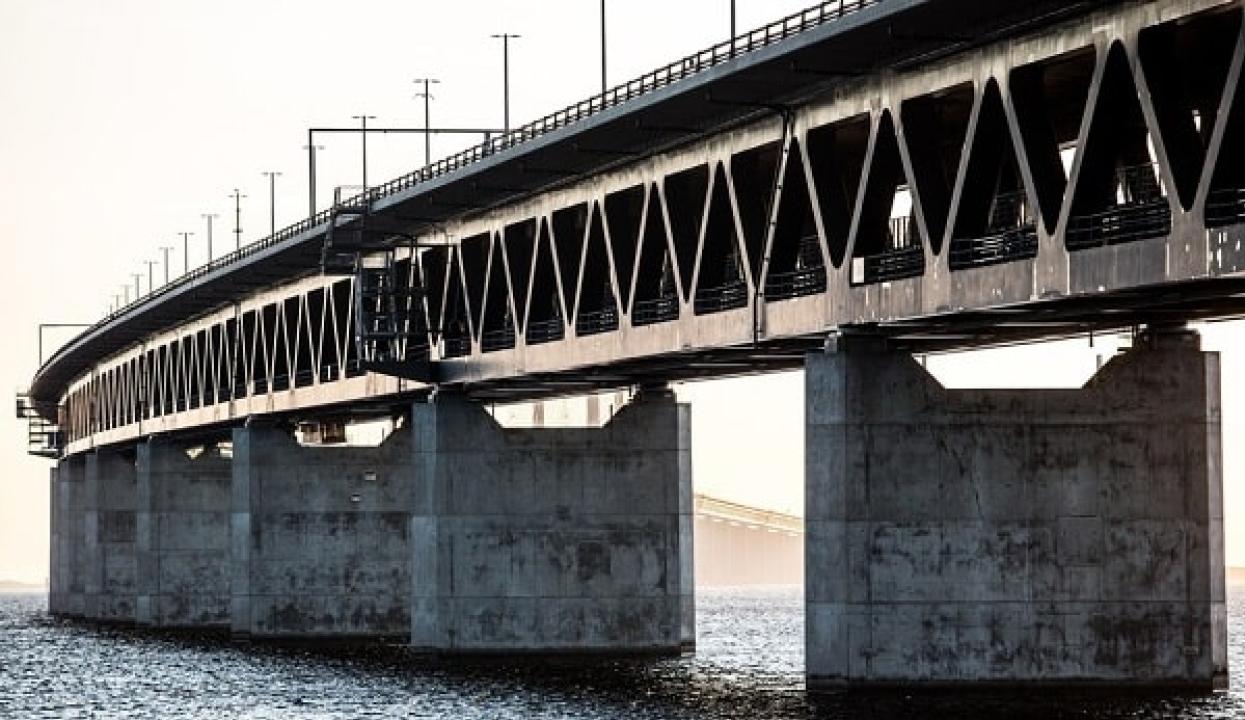Foreword:
While they may not always be the most obvious feature of a bridge for the general public, bridge abutments are key elements impacting a bridge’s ability to carry the loads imposed on it throughout its lifespan. Normally located at both ends of a bridge structure, they serve as an interface between the bridge structure and the ground it spans across. This article details what bridge abutments are, how they function, the types of abutments, the impact of abutments on the life expectancy and aesthetic considerations of bridges.
What Is a Bridge Abutment?
An abutment is a supporting structure positioned at each end of a bridge. Essential for the smooth function and design of a bridge, abutments have two primary roles. These are:
Supporting the Superstructure:
Abutments have to be strong enough to support what the bridge deck, the road or path you drive or walk on, as well as any forces applied to them by vehicles, people, wind, or falling snow.
Also Read : Different Types of Expansion Joints in Bridge Construction
Retaining the Approach Fill:
Abutments hold back embankments or additional earth behind them so the approach to the bridge doesn't slide down the approach and take the bridge with it.
With only the bridge deck in place without the abutments, the bridge would have nothing to connect to on either end of the crossing, therefore, rendering the bridge as dangerous and would not function. Abutments also act as transition points to take the loads the bridge's load and pass them on to the foundation, keeping the bridge grounded on solid ground.
Functions of Bridge Abutments:
Abutments do more than just act as start and stop points for bridges. Several other functions and purposes are performed by abutments such as:
Structural Support:
They are used to hold the bridge up. They direct the weight of the bridge down to the ground and also must evenly distribute it across the length of the abutment. In other words, abutments act like a load bearing wall in a building.
Retaining Earth:
A bridge that spans a river, valley or other chasm also requires the land to be pushed up to the crossing so the bridge can have an approach. Abutments maintain the land that is pushed up to the bridge so that the earth doesn’t start to slide down the approach embankment.
Also Read : Concrete Span Bridge and its major parts
Lateral Load:
Abutments must also be able to withstand side loads from the force of soil pushing up against them or the force of wind pushing sideways or even if a vehicle strikes the abutment. Abutments are designed to be strong enough to handle these types of loads.
Erosion:
Abutments are also used to prevent erosion to the foundation. Water moves at a high rate during a flood event or heavy rain where it leads to high speeds in the water. The fast moving water will dig, cut, and push soil which leads to erosion. This process will cause the foundation to become unstable.
Bridge Aesthetics:
The design and type of bridge abutment used will also affect how the bridge appears from a visual aspect. Some abutments are visible and the aesthetics of the abutment can be included in the bridge's overall aesthetics, particularly in architectural or historical settings.
Types of Bridge Abutments:
Different types of bridge abutments are designed to accommodate different site conditions and the engineering requirements. The most common types are as follows:
Gravity Abutments:
Gravity Abutments are particularly thick and could use the material's weight to secure the abutment and withstand lateral pressures from the adjoining soil and the bridge. They can be constructed from concrete or stone and are generally large in size.
U-Abutments:
U-Abutments have a U-shaped profile and are built to store a significant quantity of soil behind the abutment. This structure provides the abutment with more protection against lateral movements when the soil is wet. Shorter bridges requiring a shorter abutment to hold back the fill are probably best suited to this type of abutment.
Cantilever Abutments:
Cantilever Abutments retain soil pressure in a similar way to cantilever retainer walls. The opening or tail of the abutment remains on the ground directly behind and is held by the soil itself. These abutments often appear on large bridge spans traversed by valleys or other semi-circular structures.
Stub Abutments:
Stub Abutments are typically small in size, shorter than gravity or cantilever abutments, and feature lower back-fill walls. These abutments would be placed on a deep foundation such as pile drivers and may be constructed in instances where there is significantly less soil retention or add strength. It is also appropriate to use stub abutments in situations where the soil is significantly less environmentally stable or where no backfill is required.
Integral Abutments:
It is a more modern design where the bridge deck and the abutment collide in a seamless unity to form a single, continuous structure. Thus, reducing further the weakness that usually arises in bridge design. The state-of-the-art integral abutments are ideal for small- and medium-span bridges and provide high durability, reducing maintenance needs along with resisting water infiltration.
Design Considerations for Bridge Abutments:
The design of bridge abutments requires a multifarious approach in consideration of various factors taken into account in the course. Engineers are required to take into consideration various criteria:
Load-Bearing Capacity:
An abutment must be designed to withstand the vertical loads imposed by the bridge deck and other live loads, such as vehicles or pedestrians. The vertical load varies according to bridge size and function, and the design of the abutment must allow it to resist this load.
Soil and Foundation:
The design will differ significantly according to the soil type. Where loose or otherwise unset soils exist, some foundations will need piles or caissons to give adequate support and strength. Other soils are good, if not completely perfect, and in some cases the required geometry can be less complicated so that stub abutments can be used. Engineers quite often need to conduct geotechnical surveys of soil types before designing the superstructures supported by them.
Water and Drainage:
Water is perhaps the greatest enemy faced while trying to maintain the integrity of an abutment. Water must flow in a nearby drainage ditch to direct away from the bridge abutment to prevent erosion, flooding, or even ground degradation, further ruining the abutment foundation. In the case of bridges running over rivers, abutment design must also take into account the threats of flowing water along with any other pressurized force behind it.
Seismic and Wind Forces:
The abutments should be designed for seismic or wind shocks in earthquake-prone or windy regions. Seismic loads would induce stress that translates into significant lateral movement, which requires either added flexibility of the abutment or additional reinforcement to prevent cracking or falling.
Thermal Expansion:
Bridges expand and contract because of temperature changes. Expansion joints or other means must therefore be incorporated into abutments to facilitate safe movement from thermal effects.
Aesthetic Integration:
Aesthetic integration of the abutment into the rest of the bridge, particularly in urban or scenic locales, is of great importance. Some structural types integrate exposed abutments as part of their architectural design while still leaving them functional; in fact, some others may end up camouflaged altogether.
Conclusion:
Thus, even if they are not the most conspicuous or glamorous feature of a bridge, the abutments are indeed a very important aspect of bridge safety, integrity, and design. Ever since the gigantic bridge spans for the rivers and the humble village spans, they form a conduit for all other links between land and seaport.
By gaining insight into the various types of abutments and the considerations for their engineering design, engineers can better design standardized bridges that perform well, are durable enough to withstand hard knocks, and still look good through time.

















